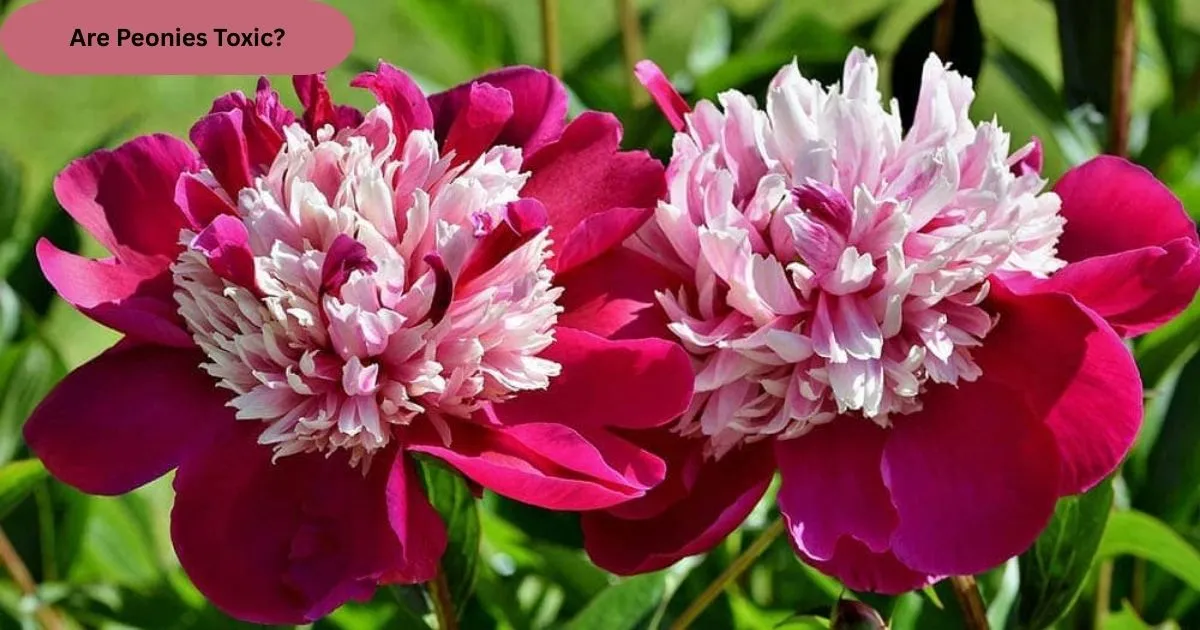Peonies are among the most popular flowers, loved for their large, colorful blooms and sweet fragrance. They add beauty to gardens and homes, making them a favorite choice for many flower lovers.
However, if you have pets or small children, you might wonder if peonies are completely safe. Understanding the potential toxicity of peonies is important to ensure your family and furry friends stay healthy around these beautiful plants.
What Makes Peonies Potentially Toxic?
Peonies contain a substance called paeonol, which is found mainly in the bark but can also be present in smaller amounts throughout the plant. Paeonol has been shown to have mild toxic effects when ingested, causing reactions in both humans and animals.
While paeonol is not highly dangerous in small amounts, larger consumption can lead to noticeable health issues. That’s why it’s essential to know the risks, especially if you have pets or young children who might be tempted to taste these beautiful blooms.
Are Peonies Toxic to Dogs and Cats?
Yes, peonies are considered toxic to dogs and cats if ingested. Symptoms often include vomiting, diarrhea, and lethargy, which typically appear within a few hours after eating parts of the plant.
Fortunately, most cases of peony poisoning in pets are not fatal and result in mild to moderate symptoms. However, it is still important to seek veterinary advice if you suspect your pet has consumed any part of a peony.
Symptoms of Peony Poisoning in Animals
When dogs or cats eat peony flowers, leaves, or stems, they might start showing gastrointestinal symptoms. Common signs include drooling, reduced appetite, and loose stools, indicating mild irritation of the stomach lining.
In more serious cases, you might notice increased weakness or a significant change in behavior. Immediate veterinary care is recommended to ensure your pet stays safe and recovers without complications.
Are Peonies Toxic to Humans?
Peonies are mildly toxic to humans, especially if parts of the plant are consumed in large amounts. Ingesting the plant may cause nausea, vomiting, diarrhea, or skin irritation when handled improperly.
While serious poisoning in humans is rare, it’s still wise to keep peonies out of the reach of young children who might chew on the petals or leaves. Always wash your hands after handling peonies to minimize the risk of irritation.
What Parts of the Peony Plant Are Toxic?
The entire peony plant—flowers, stems, leaves, and roots—contains some level of toxicity. However, the roots and bark tend to have the highest concentration of paeonol, making them the most concerning parts.
Most accidental ingestions happen with the petals or leaves because they are more accessible. While the petals might seem harmless, they can still cause upset stomachs if eaten by pets or small children.
How to Keep Pets Safe Around Peonies
If you love growing peonies in your garden, consider planting them in an area that pets cannot easily access. Raised beds, hanging planters, or fenced-off gardens are excellent ways to keep curious pets safe.
Training your pets to avoid certain plants can also be effective. Use positive reinforcement techniques to teach dogs and cats that peonies are off-limits, ensuring a safer environment for your furry friends.
Safe Alternatives to Peonies for Pet Owners
Pet owners looking for non-toxic floral options can consider flowers like sunflowers, snapdragons, or roses. These alternatives are beautiful and provide peace of mind without posing a risk to your pets.
Adding pet-safe plants to your home and garden ensures that even if a curious paw or mouth investigates, there won’t be dangerous consequences. Always double-check the safety of plants before introducing them to your space.
What to Do if Peony Poisoning Occurs
If you suspect your pet or child has ingested part of a peony, it’s important to act quickly. Rinse the mouth gently with water and contact a medical professional or veterinarian for advice.
Bring a sample of the plant with you to the doctor or vet, as it can help identify the issue faster. Most cases of mild poisoning resolve with proper care, but it’s better to be cautious and seek professional help.
Conclusion
In conclusion, while peonies are a stunning addition to gardens and homes, it’s important to recognize their mild toxicity. Both pets and humans can experience unpleasant symptoms if parts of the plant are ingested. Thankfully, severe cases are rare and can often be avoided with proper precautions.
Keeping peonies out of reach of curious pets and children, and considering safer plant alternatives, ensures a worry-free environment. With a little care and awareness, you can enjoy the beauty of peonies without putting your loved ones at risk. Always prioritize safety to fully appreciate these gorgeous, timeless flowers in your space.
Read More: What Do Peonies Mean?
FAQ’s
Are peonies toxic to pets?
Yes, peonies are mildly toxic to dogs and cats if ingested.
Can peonies cause health issues in humans?
Peonies can cause mild stomach upset or skin irritation in humans if consumed or handled improperly.
What symptoms do pets show after eating peonies?
Pets may experience vomiting, diarrhea, drooling, and lethargy after ingesting peonies.
Which part of the peony plant is the most toxic?
The roots and bark contain the highest levels of toxic compounds like paeonol.
How can I keep my pets safe around peonies?
Keep peonies out of pets’ reach or plant them in fenced or elevated garden areas.









